
While pressure washing is an effective way for cleaning surfaces and removing dirt and grime, but when it comes to high-intensity cleaning solutions, you’ll have two main options: hot water pressure washers and steam cleaners. These are two popular options for various applications, including cooking, cleaning, and industrial processes. Both have their advantages and disadvantages, and understanding the differences can help make an informed decision on which option is better suited for specific needs.
Steam cleaners are powerful tools that use high-temperature steam to clean and sanitize surfaces effectively. On the other hand, Hot water pressure washers are robust cleaning tools designed to remove tough grime and dirt. These machines combine the power of high-pressure water jets with heated water, making them highly effective for various cleaning tasks.
Difference between Hot water pressure washer and steam cleaners:
| Aspect | Hot water pressure washer | Steam cleaner |
|---|---|---|
| Cleaning mechanism | Uses high-pressure, hot water jets to dislodge and remove dirt and grime. | Utilizes high-temperature steam to dissolve and clean various types of dirt and stains. |
| Temperature | Heats water to a high temperature, typically around 140-180°F (60-82°C). | Produces steam at even higher temperatures, usually around 212°F (100°C) and above. |
| Application | Ideal for removing tough grease, oil, and grime from surfaces like driveways, vehicles, and machinery. | Suitable for sanitizing and cleaning a wide range of surfaces such as floors, tiles, upholstery, and kitchen equipment. |
| Cleaning effectiveness | The combination of high pressure and heat provides effective cleaning power for heavy-duty tasks. | Steam’s high temperature helps to kill bacteria and germs, making it a hygienic cleaning option. |
| Chemical usage | Can sometimes require the use of cleaning detergents or chemicals for better results. | Typically eliminates the need for chemical cleaners, offering an eco-friendly cleaning solution. |
| Surface stability | Effective on hard surfaces and heavy-duty materials, but may not be suitable for delicate items. | Versatile for various surfaces, but caution is needed on sensitive materials due to heat and moisture. |
| Commercial/industrial use | Widely used in industrial settings for heavy-duty cleaning tasks. | Often used in both commercial and residential settings for regular cleaning and sanitization. |
| Cost | Generally higher initial cost due to the combination of pressure and heating components. | Typically lower initial cost compared to pressure washers. |
| Time efficiency | Faster cleaning due to the force of high-pressure water jets. | Slightly slower cleaning process compared to pressure washers due to the steam application. |
| Environmental impact | Water consumption is higher compared to steam cleaners. | Environmentally friendly due to minimal chemical use and lower water consumption. |
Types of steam cleaners:
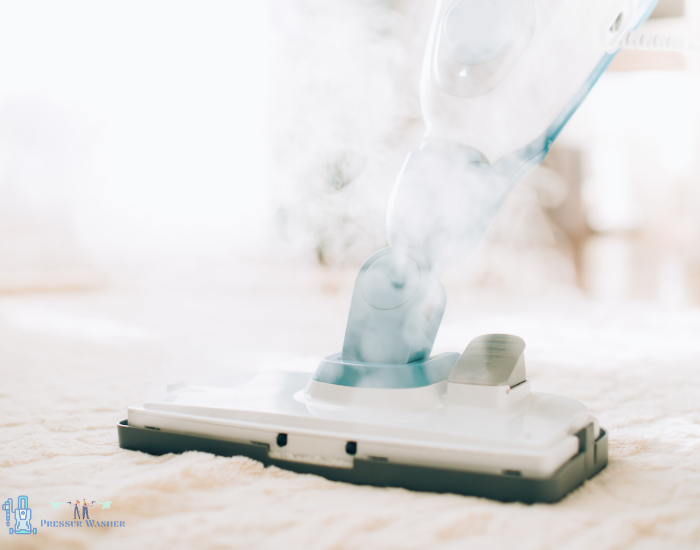
Handheld Steam Cleaners:
Handheld steam cleaners are capable of removing stuck on dirt and grime while killing bacteria, dust mites, germs, viruses, lice, bed bugs, and more. However, the usage of the handheld steam cleaners is limited to smaller, light cleaning tasks.
Steam Mops:
It uses hot water vapor to clean and sanitize hard floors, such as tile, linoleum, and hardwood floors, and other places and surfaces: walls, furniture, textile. It works by heating water in a tank, which is then released in the form of water vapor from the mop head onto the surface.
Canister :
Canister effectively and naturally cleans and sanitizes a wide variety of surfaces. With professional steam power and a versatile array of attachments, the Canister is designed for tackling the toughest jobs throughout your home.
Upright :
Cleaning all types of flooring, even delicate carpet and hardwood floors. Disinfecting all surfaces in the kitchen and bathroom. Sanitizing furniture and equipment. Obtaining streak-free mirrors and windows.
Commercial/Industrial :
Efficient and effective tools for cleaning and sanitization, with or without the use of chemicals.
Steam Vacuum Cleaners:
They are great for deep cleaning upholstery. It will easily and effectively remove deeply embedded dirt and stains from upholstery.
Types of Hot Water Pressure Cleaning:
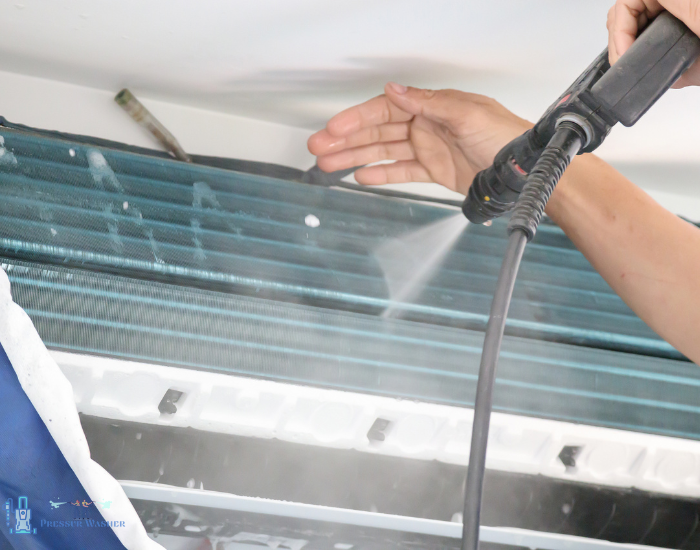
Residential Pressure Washers:
They are designed for occasional, residential use to clean vehicles, roofs, decks and patios. They typically should offer between 1,300-2000 PSI (pounds per square inch).
Gas-Powered Pressure Washers:
They are specially designed for engineered metal pumps and components that are interchangeable and replaceable, making maintenance easy.
Commercial Pressure Washers:
They are high pressure reciprocating plunger pump that uses high pressure water jet to remove mold, grime, dust, mud and dirt from surfaces and objects such as buildings, vehicles and concrete road surfaces.
Industrial Pressure Washers:
They are high pressure reciprocating plunger pump that uses high pressure water jet to remove mold, grime, dust, mud and dirt from surfaces and objects such as buildings, vehicles and concrete road surfaces.
Truck-Mounted Pressure Washers:
A versatile tool for mobile cleaning companies and remote cleaning jobs.
Trailer-Mounted Pressure Washers
Are ideal for use in remote locations or areas without access to electricity or water. They can be easily towed behind a vehicle and are powered by a diesel engine or petrol engine, providing the necessary pressure and flow rate to tackle tough cleaning jobs.
Why Steam Cleaning is better?
Steam cleaning is better than hot water pressure cleaning in a few key ways. First, steam cleaning gets really hot, which makes things super clean and kills germs that might make us sick. It’s great for places like kitchens and hospitals. Second, steam cleaning doesn’t need any chemicals to work, which is good for the environment and our health. Third, steam cleaning can clean lots of different things, like floors and furniture, while hot water pressure cleaning is better for really tough dirt. So, if you want things really clean, germ-free, and eco-friendly
Pros
Steam cleaners use only water to create steam, eliminating the need for chemical cleaning agents. This is better for the environment and reduces chemical exposure.
-High Temperature Sanitization: The steam produced by steam cleaners reaches high temperatures that can effectively kill bacteria, germs, and allergens on surfaces, providing a hygienic cleaning solution.
-Versatility: Steam cleaners can be used on a wide range of surfaces, from floors and tiles to upholstery and even clothing. This versatility makes them a versatile tool for various cleaning needs.
-Allergen Removal: Steam cleaning’s high heat can help eliminate allergens like dust mites, pet dander, and mold spores, creating a healthier living environment.
-Eco-Friendly: Due to the absence of chemical cleaners and reduced water consumption compared to traditional methods, steam cleaning is an environmentally friendly cleaning option.
-Efficient Grease Removal: Steam can effectively dissolve and loosen tough grease and grime, making it great for kitchen surfaces and appliances.
Cons:
-Slower Cleaning Process: Steam cleaning can be slightly slower than other methods, as the steam needs time to work on the surface before wiping away dirt.
-Surface Sensitivity: Some delicate materials, such as certain types of wood or fabrics, might not be suitable for steam cleaning due to the high heat and moisture.
-Initial Cost: High-quality steam cleaners can have a relatively higher upfront cost compared to traditional cleaning methods.
-Water Residue: In some cases, using a steam cleaner on porous surfaces can leave behind residual moisture, which might require additional drying time.
-Limited Grout Cleaning: While steam cleaners are effective on many surfaces, they might struggle to fully clean deeply embedded dirt in grout lines.
Not Suitable for Very High-Temperature Sensitive Items: Extremely heat-sensitive items, like certain plastics or electronics, could be damaged by the high temperatures of steam.
Is Hot Water Extraction the Same as Steam Cleaning?
Hot Water Extraction:
Hot water extraction, often referred to as “steam cleaning,” involves using a machine to spray a mixture of hot water and detergent onto the carpet or upholstery. The mixture is then immediately vacuumed up along with the loosened dirt and grime. While the water used in this process is indeed hot, the term “steam cleaning” is somewhat of a misnomer, as true steam isn’t the main cleaning agent.
Steam Cleaning Extraction:
On the other hand, steam cleaning, in its strictest sense, uses high-temperature steam to clean surfaces. However, in the context of carpets and upholstery, the term “steam cleaning” is often used interchangeably with hot water extraction. Some machines might produce steam as a byproduct of the hot water, but the primary cleaning action is still carried out by the hot water and detergent mixture.
Hot water extraction and steam cleaning are related but not the same. They are both methods used for cleaning carpets and upholstery, but they differ in the primary cleaning agents they use and their overall processes.
Time efficiency and cleaning speed of Hot Water and Steam Water
Hot Water Pressure Cleaning:
Time Efficiency: Cleaning with hot water and high pressure is pretty fast. It’s great for getting rid of dirt and grime quickly, especially from tough surfaces like driveways and machines.
Cleaning Speed: Using hot water with strong pressure can cover a lot of space in a short time. It’s like a fast and powerful way to clean things up.
Steam Cleaning:
Time Efficiency: Steam cleaning is effective, but it takes a bit more time. The super-hot steam needs a moment to work its magic before wiping away dirt.
Cleaning Speed: While not as quick as hot water pressure cleaning, steam cleaning goes deeper and kills germs. It might take a bit more time, but it’s like giving things a really thorough cleaning treatment.
Chemical Considerations in Hot Water Pressure Cleaning
- Optional but Beneficial: In hot water pressure cleaning, you have the option to use cleaning detergents or chemicals. These substances can enhance the cleaning process by breaking down tough stains, grease, and grime more effectively.
- Targeted Cleaning: Chemicals can be particularly useful when dealing with specific types of dirt or stains that might be harder to remove with water alone. They can make the cleaning process faster and more efficient.
- Environmental Impact: However, it’s important to be mindful of the environmental impact of using chemicals. Some cleaning agents might contain harsh ingredients that could harm plants, animals, or the ecosystem if they get washed away after cleaning.
- Surface Compatibility: Different surfaces react differently to chemicals. Some materials might be sensitive to certain cleaning agents and could be damaged or discolored. Always test a small, inconspicuous area before using chemicals on a larger scale.
- Residue Concerns: Depending on the chemicals used, there might be a chance of residue remaining on the cleaned surface. This could attract more dirt over time, affecting the overall cleanliness.
Chemical-Free Cleaning with Steam
- Water as the Hero: When you use a steam cleaner, the main ingredient is plain water. The steam cleaner heats this water to incredibly high temperatures, turning it into powerful steam that does the cleaning job.
- Natural Cleaning Power: The high temperature of the steam is what does the trick. It helps break down dirt, grime, and even tough stains on various surfaces, making them easier to wipe away.
- Environmental Friendliness: Since steam cleaning doesn’t rely on chemicals, it’s a more eco-friendly way to clean. You’re not adding any potentially harmful substances to the environment or leaving residues behind.
- Healthier Spaces: Steam’s intense heat not only cleans surfaces but also helps kill bacteria, germs, and allergens. This means you’re getting a thorough clean that contributes to a healthier living environment.
- Safety and Convenience: Since you’re not dealing with chemicals, there’s no risk of accidentally using the wrong cleaning agent or inhaling fumes. Steam cleaning is safe and convenient, especially for homes with kids or pets.
Conclusion:
In conclusion, hot water pressure washers and steam cleaners offer distinct advantages. Hot water pressure washers use high-pressure, heated water to swiftly remove tough dirt, excelling in heavy-duty tasks. They might need chemicals and consume more water. On the flip side, steam cleaners wield high-temperature steam for chemical-free, hygienic cleaning. They’re versatile, eco-friendly, and great for germ removal. Choosing between them depends on speed and power (hot water) or thoroughness and eco-friendliness (steam). Understanding these differences lets you pick the best fit for your cleaning needs.
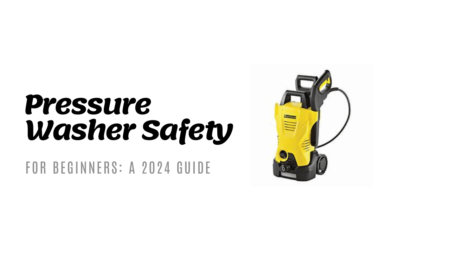
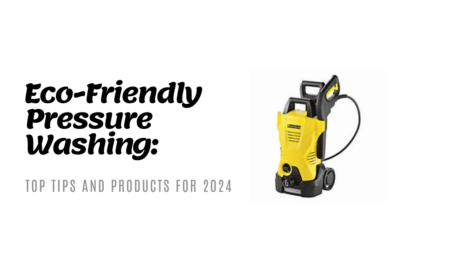
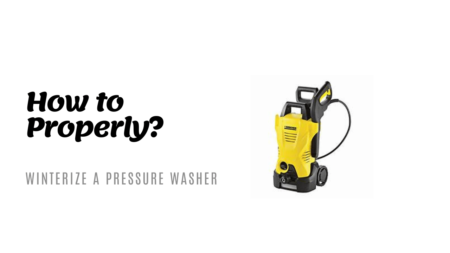
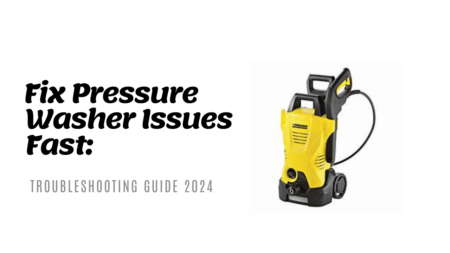
![Pressure Washing Regulations: What You Need to Know [Updated 2024]](https://pressurwasher.com/wp-content/uploads/2024/05/Minimalist-Tutorial-Event-YouTube-Thumbnail-2024-05-31T224409.854-450x253.png)
![Ultimate Guide to Pressure Washer Maintenance [2024 Edition]](https://pressurwasher.com/wp-content/uploads/2024/05/Minimalist-Tutorial-Event-YouTube-Thumbnail-2024-05-30T230638.695-450x253.png)